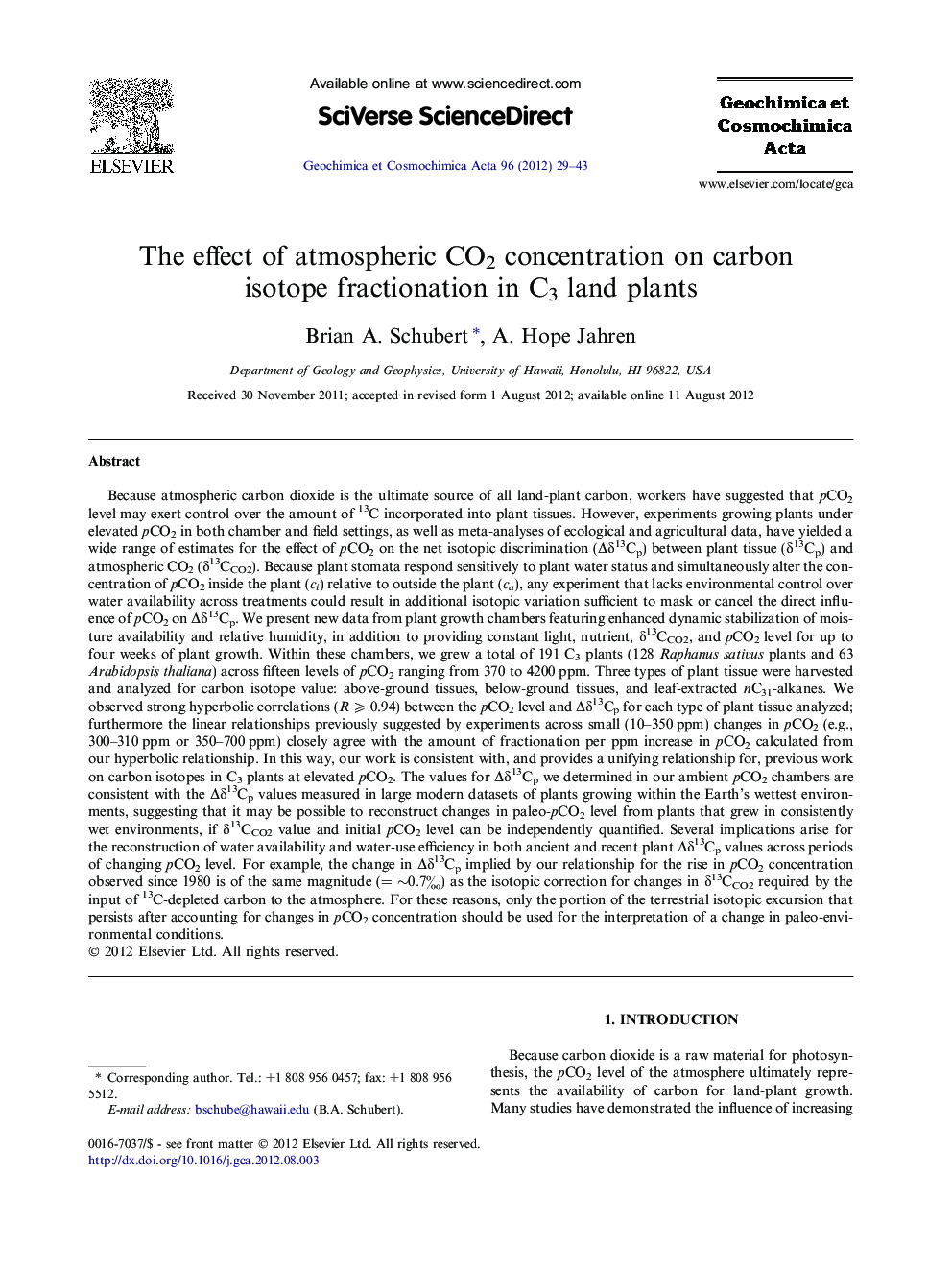| Article ID | Journal | Published Year | Pages | File Type |
|---|---|---|---|---|
| 6439187 | Geochimica et Cosmochimica Acta | 2012 | 15 Pages |
Abstract
Because atmospheric carbon dioxide is the ultimate source of all land-plant carbon, workers have suggested that pCO2 level may exert control over the amount of 13C incorporated into plant tissues. However, experiments growing plants under elevated pCO2 in both chamber and field settings, as well as meta-analyses of ecological and agricultural data, have yielded a wide range of estimates for the effect of pCO2 on the net isotopic discrimination (Îδ13Cp) between plant tissue (δ13Cp) and atmospheric CO2 (δ13CCO2). Because plant stomata respond sensitively to plant water status and simultaneously alter the concentration of pCO2 inside the plant (ci) relative to outside the plant (ca), any experiment that lacks environmental control over water availability across treatments could result in additional isotopic variation sufficient to mask or cancel the direct influence of pCO2 on Îδ13Cp. We present new data from plant growth chambers featuring enhanced dynamic stabilization of moisture availability and relative humidity, in addition to providing constant light, nutrient, δ13CCO2, and pCO2 level for up to four weeks of plant growth. Within these chambers, we grew a total of 191 C3 plants (128 Raphanus sativus plants and 63 Arabidopsis thaliana) across fifteen levels of pCO2 ranging from 370 to 4200 ppm. Three types of plant tissue were harvested and analyzed for carbon isotope value: above-ground tissues, below-ground tissues, and leaf-extracted nC31-alkanes. We observed strong hyperbolic correlations (R ⩾ 0.94) between the pCO2 level and Îδ13Cp for each type of plant tissue analyzed; furthermore the linear relationships previously suggested by experiments across small (10-350 ppm) changes in pCO2 (e.g., 300-310 ppm or 350-700 ppm) closely agree with the amount of fractionation per ppm increase in pCO2 calculated from our hyperbolic relationship. In this way, our work is consistent with, and provides a unifying relationship for, previous work on carbon isotopes in C3 plants at elevated pCO2. The values for Îδ13Cp we determined in our ambient pCO2 chambers are consistent with the Îδ13Cp values measured in large modern datasets of plants growing within the Earth's wettest environments, suggesting that it may be possible to reconstruct changes in paleo-pCO2 level from plants that grew in consistently wet environments, if δ13CCO2 value and initial pCO2 level can be independently quantified. Several implications arise for the reconstruction of water availability and water-use efficiency in both ancient and recent plant Îδ13Cp values across periods of changing pCO2 level. For example, the change in Îδ13Cp implied by our relationship for the rise in pCO2 concentration observed since 1980 is of the same magnitude (= â¼0.7â°) as the isotopic correction for changes in δ13CCO2 required by the input of 13C-depleted carbon to the atmosphere. For these reasons, only the portion of the terrestrial isotopic excursion that persists after accounting for changes in pCO2 concentration should be used for the interpretation of a change in paleo-environmental conditions.
Related Topics
Physical Sciences and Engineering
Earth and Planetary Sciences
Geochemistry and Petrology
Authors
Brian A. Schubert, A. Hope Jahren,
